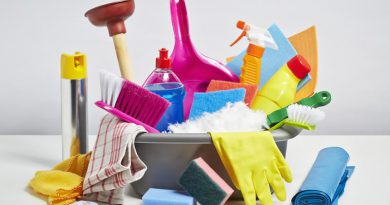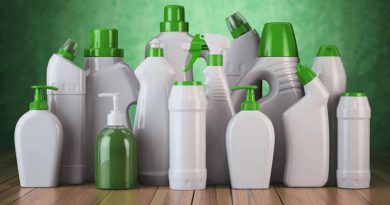Which Cleaning Products Have Antibacterial Properties?
Maintaining a clean and hygienic environment is a top priority for many individuals and households. When it comes to cleaning, some people prefer using products that have antibacterial properties to further enhance the sanitation process. In this article, we’ll delve into the topic of which cleaning products possess antibacterial features, providing you with valuable insights into this aspect of home cleaning.
The Significance of Antibacterial Cleaning
In our daily lives, we encounter various surfaces and objects that may harbor harmful bacteria. Using cleaning products with antibacterial properties can help eliminate or reduce the presence of these microorganisms, creating a cleaner and potentially safer living environment. Antibacterial cleaning can be particularly beneficial in areas prone to high bacterial activity, such as kitchens and bathrooms.
Understanding Antibacterial Agents
Antibacterial cleaning products contain specific ingredients or agents that have the ability to kill or inhibit the growth of bacteria. Common antibacterial agents found in cleaning products include alcohol-based compounds, such as ethanol or isopropyl alcohol, as well as chemicals like benzalkonium chloride or triclosan. These agents work by disrupting the cellular structures or metabolic processes of bacteria, effectively neutralizing their presence.
Types of Cleaning Products with Antibacterial Properties
Numerous cleaning products on the market offer antibacterial capabilities. These include:
- Antibacterial Surface Sprays: These sprays are designed to be applied directly to surfaces, such as countertops, sinks, and toilets, to eliminate bacteria effectively. They often come in convenient spray bottles for easy application.
- Antibacterial Wipes: These pre-moistened wipes are a convenient option for quick and targeted cleaning. They are designed to be used on various surfaces, such as doorknobs, light switches, and electronic devices, to reduce bacterial contamination.
- Antibacterial Hand Soaps: Hand hygiene is crucial for preventing the spread of germs. Antibacterial hand soaps contain agents that help remove bacteria from the skin’s surface during handwashing, promoting better hand hygiene practices.
- Antibacterial Laundry Detergents: To ensure cleanliness and hygiene in garments, antibacterial laundry detergents can be used. They help eliminate bacteria that may be present on clothes, particularly those soiled with bodily fluids or in contact with potentially contaminated environments.
Considerations for Antibacterial Cleaning
While the use of antibacterial cleaning products can be beneficial, it’s important to remember a few key points:
- Follow Usage Instructions: Always read and follow the instructions provided by the manufacturer for proper and safe use of antibacterial cleaning products. Pay attention to recommended contact times and any precautions specified.
- Balanced Approach: Antibacterial cleaning should be balanced with regular cleaning practices. It’s essential to remember that not all cleaning needs require antibacterial agents. Regular cleaning with non-antibacterial products is often sufficient for maintaining cleanliness in most areas of the home.
- Resistance Concerns: Excessive and unnecessary use of antibacterial products may contribute to the development of bacterial resistance. To mitigate this risk, reserve the use of antibacterial cleaning products for specific areas or situations where a higher level of sanitation is warranted.
Alternative Cleaning Methods
In addition to using commercial cleaning products with antibacterial properties, there are alternative cleaning methods you can consider. These methods can provide effective cleaning without relying solely on antibacterial agents:
- Natural Cleaning Solutions: Many natural ingredients, such as vinegar, baking soda, and lemon juice, have antimicrobial properties and can be used as effective cleaning agents. They are safe, environmentally friendly, and often readily available in most households.
- Steam Cleaning: Steam cleaning is a chemical-free method that utilizes hot steam to disinfect and sanitize surfaces. It is particularly effective for cleaning carpets, upholstery, and hard-to-reach areas, eliminating the need for chemical-based antibacterial products.
- UV-C Light Sanitization: UV-C light has been proven to kill or inactivate bacteria and other microorganisms. UV-C sanitization devices emit this specific wavelength of light, offering an alternative method for disinfecting surfaces and objects.
- Good Hygiene Practices: Practicing good personal and environmental hygiene is essential in preventing the spread of bacteria. Regular handwashing with plain soap and water, proper food handling and storage, and regular cleaning of frequently touched surfaces can go a long way in maintaining a clean and healthy environment.
The Importance of Regular Cleaning
While antibacterial cleaning products can play a role in maintaining cleanliness and reducing bacterial contamination, it’s crucial to remember that regular cleaning is fundamental. Consistent cleaning practices, including dusting, sweeping, vacuuming, and mopping, help remove dirt, debris, and bacteria from surfaces.
It’s also important to adopt a holistic approach to cleaning, addressing not only bacteria but also other contaminants like viruses, allergens, and pollutants. A clean home contributes to overall well-being and provides a pleasant living environment for you, your family, and your pets.
Remember, maintaining cleanliness is a continuous process that requires regular attention and effort. By combining effective cleaning methods, suitable cleaning products, and good hygiene practices, you can create a clean and hygienic living space for everyone.




